One thing I’ve come to learn over the fifteen years I’ve been at this whole collecting thing is that there is such a broad swath of things that online sellers, whether unscrupulous or simply misinformed, will label as kimono. It can be incredibly confusing and overwhelming for new collectors who are trying their best to get something authentic. Today, I’m going to try to help you out and break down “real” versus “fake” kimono, as well as authentic Japanese garments that would simply be a little awkward or inappropriate as outerwear.
Technically, kimono does just mean an item you wear (着 – ki, to wear; 物 – mono, thing), but when you think of traditional Japanese clothing there is usually a pretty distinct line delineates what is and is not a kimono. When starting to collect, it’s not uncommon to come across all manner of strange, hard-to-categorise items. To the novice, they may look and feel like a proper kimono, but they may get you funny looks if worn in inappropriate situations.
Today, I’m going to break down some of these more common misunderstood items in the hopes of clearing up some of these confusion. Of course, you can wear whatever you own and love, but if you’re new to this and feeling overwhelmed while browsing online or at conventions, hopefully this will help you out! Nearly all of these are pieces I own, which I hope goes to reassure you that they’ve all got their place and nearly none (we’ll get to the lone exception later) are inherently bad or wrong things to own. There’s just a time and a place for them.
Kimono-influenced Dressing gown
These may be made in China, North America, or even Japan, but they are meant to be worn like any other dressing gown or bathrobe. They will typically have Japonesque feels and motifs to them, and definitely do evoke a formal kimono-ish vibe, but they are absolutely just for in-house wear.
Defining characteristics:
- Fabric: shiny satin or polyester
- Belt: Yes, same fabric
- No okumi panel
- Often (but not always) has closed, narrow sleeves
Appropriate wear situations: Lounging, at home, at the spa
Nemaki
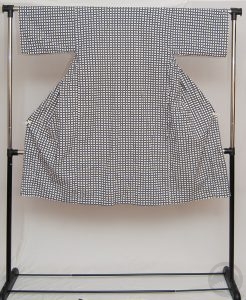 Our first traditional Japanese garment, the nemaki is essentially bed- or house-wear. They’re incredibly comfortable and casual, but not the sort of thing you’re going to want to be wearing outside of the house unless it’s part of a costume or a themed event of some sort where other folks might be wearing pyjamas, novelty onesies, or similar garments.
Our first traditional Japanese garment, the nemaki is essentially bed- or house-wear. They’re incredibly comfortable and casual, but not the sort of thing you’re going to want to be wearing outside of the house unless it’s part of a costume or a themed event of some sort where other folks might be wearing pyjamas, novelty onesies, or similar garments.
Defining characteristics:
- Fabric: woven cotton or hemp
- Belt: Yes, same fabric. May be attached.
- White with printed indigo designs
- Short; mid-calf or knee length
- Closed, narrow sleeves
Appropriate wear situations: Lounging, at home, in bed
Onsen yukata
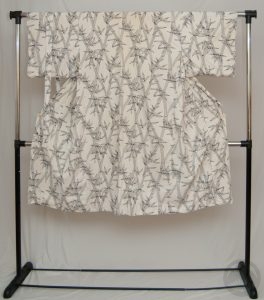 A step up from nemaki but still not “outside clothes”. They’re generally a little fancier, since they may be seen by non-family members, but it’s still in the context of sleeping or bathing. Wearing one of these outside of a hotel, inn, or hot-springs situation would definitely get you some funny looks. I have, however, worn one in lieu of a juban in a pinch, so there’s a tip for you!
A step up from nemaki but still not “outside clothes”. They’re generally a little fancier, since they may be seen by non-family members, but it’s still in the context of sleeping or bathing. Wearing one of these outside of a hotel, inn, or hot-springs situation would definitely get you some funny looks. I have, however, worn one in lieu of a juban in a pinch, so there’s a tip for you!
Defining characteristics:
- Fabric: woven cotton or hemp
- Belt: Usually, same fabric
- White with printed indigo designs
- Knee or mid-calf length
- Typical kimono sleeves
Appropriate wear situations: Lounging, at home, at the spa, at the ryokan, at the onsen
Cosplay kimono
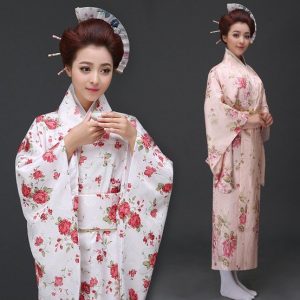 No. Just… no. These are mass-produced by factories that only care about making a quick buck, and don’t give a hoot about anything resembling accuracy. They’re often sold as “traditional” or “authentic” kimono which takes advantage of people who are still learning, and that frustrates me immensely. I couldn’t even bring myself to buy one of these for reference purposes, so you’ll have to deal with this photo from one of the many, many online vendors of these things. Personally, I feel like the biggest travesty on these is the “obi”, which is generally a belt in the same fabric as the kimono itself, with an attached bow backed with a cardboard square. Or, as my friend once put it, a “spinal mortarboard“. I thought these fake obi were funny enough to begin with, but now I can’t see them and not think of that comparison.
No. Just… no. These are mass-produced by factories that only care about making a quick buck, and don’t give a hoot about anything resembling accuracy. They’re often sold as “traditional” or “authentic” kimono which takes advantage of people who are still learning, and that frustrates me immensely. I couldn’t even bring myself to buy one of these for reference purposes, so you’ll have to deal with this photo from one of the many, many online vendors of these things. Personally, I feel like the biggest travesty on these is the “obi”, which is generally a belt in the same fabric as the kimono itself, with an attached bow backed with a cardboard square. Or, as my friend once put it, a “spinal mortarboard“. I thought these fake obi were funny enough to begin with, but now I can’t see them and not think of that comparison.
Defining characteristics:
- Fabric: cheap, shiny polyester
- Belt: Matching “obi”, usually backed with cardboard
- “Japonisme” vaguely Asian designs
- Thin, contrasting collar permanently attached
- Much too short for proper wear, often leaving ankles exposed
Appropriate wear situations: Conventions if you must but ideally nowhere
Tourist kimono
Generally made in Japan for the export market, these are probably the closest to a proper formal kimono, but there are a few key differences. Kimono typically have some construction seams across the upper back and down the spine, and these usually don’t. The fabric also tends to be a little shinier and flashier in most cases. However, they can be a great starting point for a collector or something a little more worry-free to wear to a party or convention. Mine was a gift and I love it, it makes a really lush, opulent-feeling robe for swanning around the house in. Sometimes, you can luck out and find very historically interesting ones made as souvenirs during the post WWII occupation that I think have fantastic historical and reference value as well.
Defining characteristics:
- Fabric: higher-quality satin, rayon, or occasionally silk
- Belt: Occasionally, usually matching or contrasting fabric
- Constructed very similarly to proper kimono
- May have embroidery across the back
- More traditional patterns
- No horizontal back seam
Appropriate wear situations: Lounging, conventions, fashion wear
Yukata
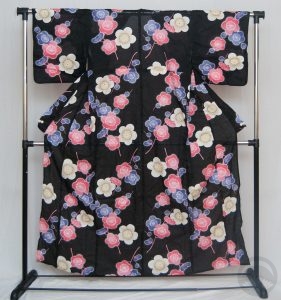 The good old festival yukata. If your introduction to kimono was the ubiquitous summer festival of your favourite anime, you are no doubt familiar with these. They’re a great first purchase for someone dipping their toes into collecting, as they require way less layers, accessories, and fussing to put on than a kimono. You can find them in colours and patterns ranging from incredibly cute and youthful florals to subdued, more mature geometrics to suit any tastes. I firmly believe that every kimono collector should have a couple of these in their arsenal, as they’re cute and comfy, and great for dressing friends who may not be ready for the full kimono experience.
The good old festival yukata. If your introduction to kimono was the ubiquitous summer festival of your favourite anime, you are no doubt familiar with these. They’re a great first purchase for someone dipping their toes into collecting, as they require way less layers, accessories, and fussing to put on than a kimono. You can find them in colours and patterns ranging from incredibly cute and youthful florals to subdued, more mature geometrics to suit any tastes. I firmly believe that every kimono collector should have a couple of these in their arsenal, as they’re cute and comfy, and great for dressing friends who may not be ready for the full kimono experience.
Defining characteristics:
- Fabric: Crisp, breezy cotton or hemp
- Belt: None, worn with coordinating hanhaba obi
- Constructed using same pattern and structure as more formal kimono
- Traditional motifs ranging from vibrant youthful florals to subdued geometrics
Appropriate wear situations: Summer festivals, picnics, conventions
Polyester komon
Our first “real” kimono! They may be made out of polyester, which some people will see and assume this falls into the same category as tourist kimono. However, nowadays polyester is a very common material for both casual kimono and formal rental pieces. These are great if you’re going somewhere where there’s a risk of mess; be it a restaurant, a convention, or simply an event in inclement weather, a poly komon is a fantastically versatile piece that I encourage all new collectors to invest in. Just be warned, they don’t breathe like natural fibers would, so they can get very hot in the summer or in crowded venues.
Defining characteristics:
- Fabric: High-quality polyester, similar in feel to silk.
- Belt: No, to be worn with coordinating hanhaba or nagoya obi
- All-over repeating pattern
Appropriate wear situations: Casual events, conventions, dinners, parties
Silk kimono
There are too many varieties of real kimono to include one of each in this entry. I have already done a breakdown of types, formalities, and how to tell them apart, in this article so now that you know what isn’t a real kimono, feel free to go read about the many varieties that are.
Hopefully this has helped you break down what to look for when dipping your toes into the wonderful world of kimono collecting, and has helped give you a little confidence and the knowledge you need to make sure your first few purchases are things you will love and cherish!

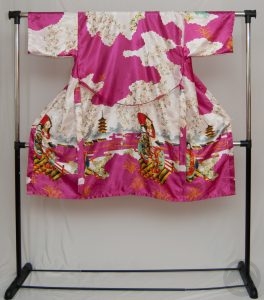

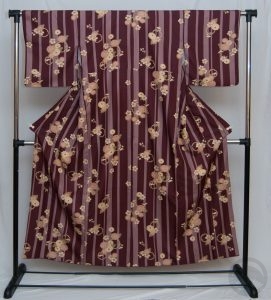
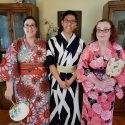
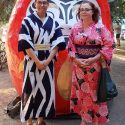
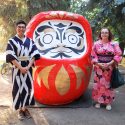
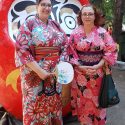
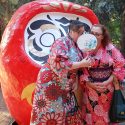

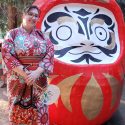

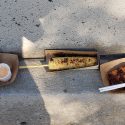
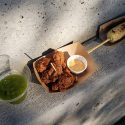
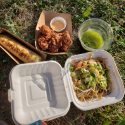

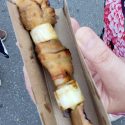


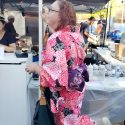


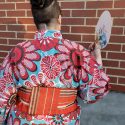
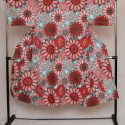
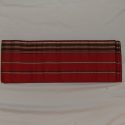
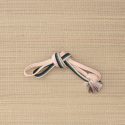
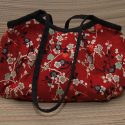
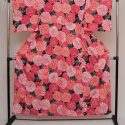
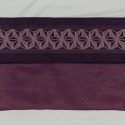
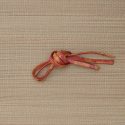
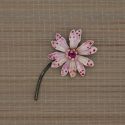
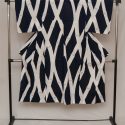
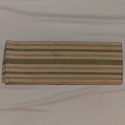
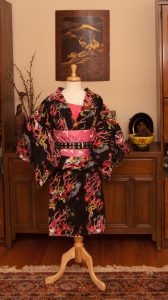
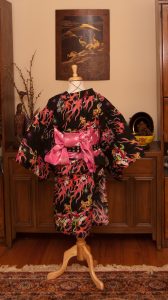
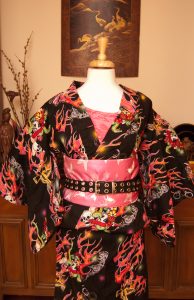
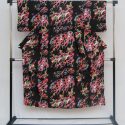
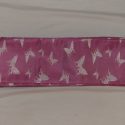
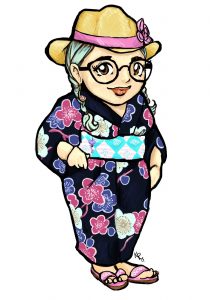
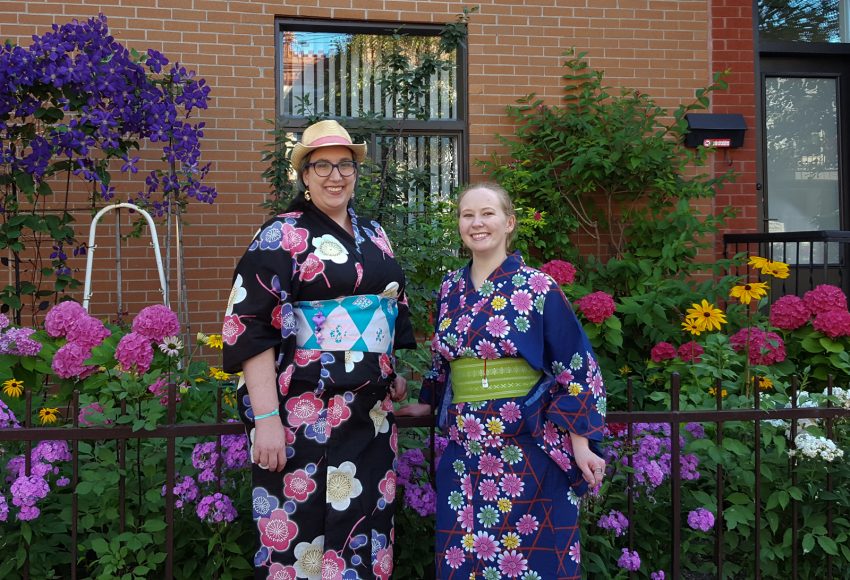



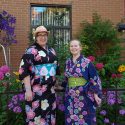







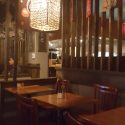


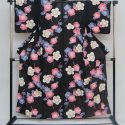
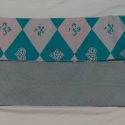
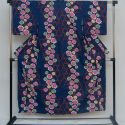
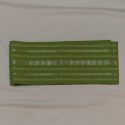
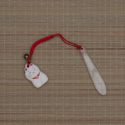












 Bebe Taian
Bebe Taian CHOKO Blog
CHOKO Blog Gion Kobu
Gion Kobu